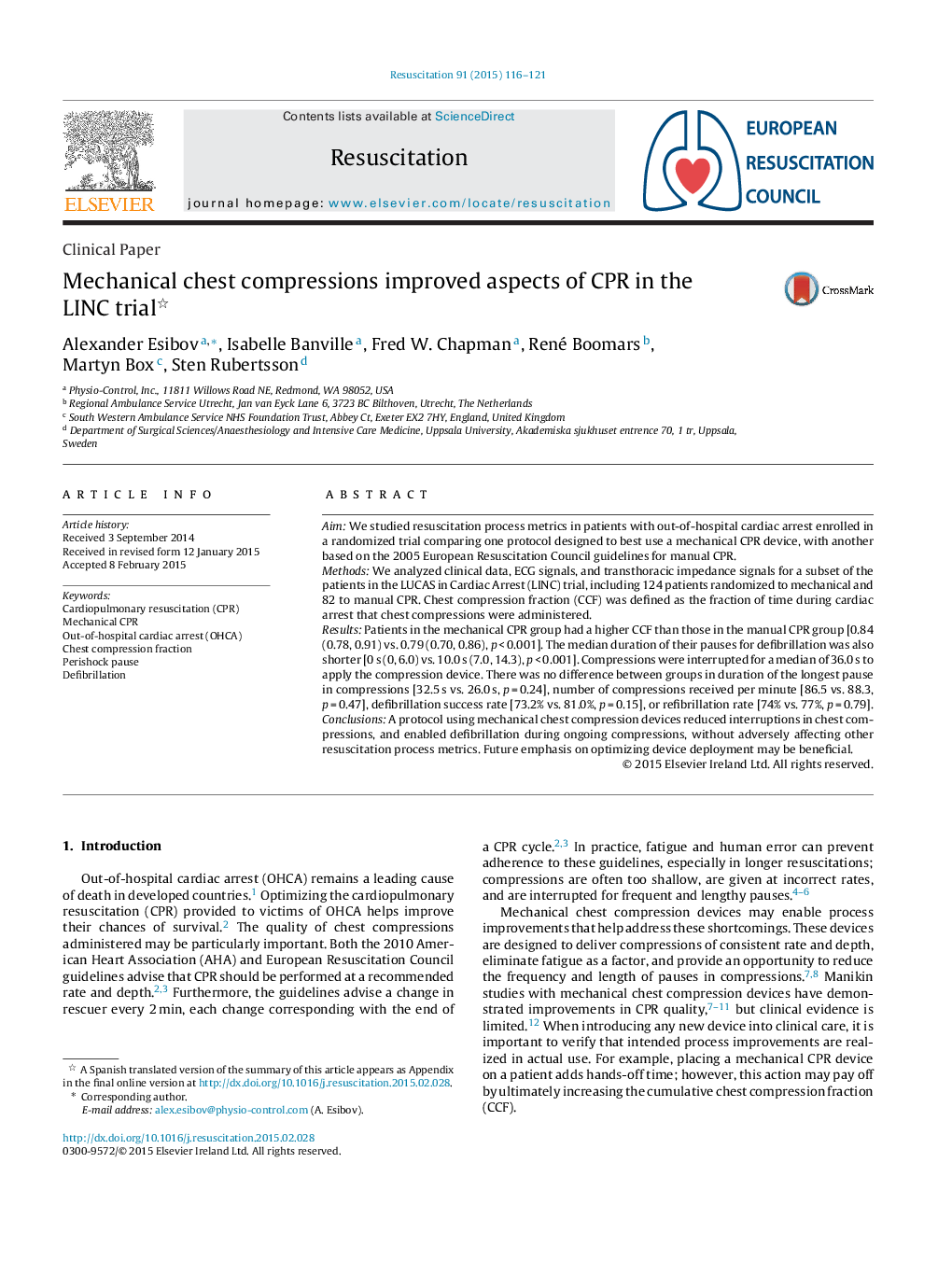| Article ID | Journal | Published Year | Pages | File Type |
|---|---|---|---|---|
| 5997773 | Resuscitation | 2015 | 6 Pages |
AimWe studied resuscitation process metrics in patients with out-of-hospital cardiac arrest enrolled in a randomized trial comparing one protocol designed to best use a mechanical CPR device, with another based on the 2005 European Resuscitation Council guidelines for manual CPR.MethodsWe analyzed clinical data, ECG signals, and transthoracic impedance signals for a subset of the patients in the LUCAS in Cardiac Arrest (LINC) trial, including 124 patients randomized to mechanical and 82 to manual CPR. Chest compression fraction (CCF) was defined as the fraction of time during cardiac arrest that chest compressions were administered.ResultsPatients in the mechanical CPR group had a higher CCF than those in the manual CPR group [0.84 (0.78, 0.91) vs. 0.79 (0.70, 0.86), p < 0.001]. The median duration of their pauses for defibrillation was also shorter [0 s (0, 6.0) vs. 10.0 s (7.0, 14.3), p < 0.001]. Compressions were interrupted for a median of 36.0 s to apply the compression device. There was no difference between groups in duration of the longest pause in compressions [32.5 s vs. 26.0 s, p = 0.24], number of compressions received per minute [86.5 vs. 88.3, p = 0.47], defibrillation success rate [73.2% vs. 81.0%, p = 0.15], or refibrillation rate [74% vs. 77%, p = 0.79].ConclusionsA protocol using mechanical chest compression devices reduced interruptions in chest compressions, and enabled defibrillation during ongoing compressions, without adversely affecting other resuscitation process metrics. Future emphasis on optimizing device deployment may be beneficial.
